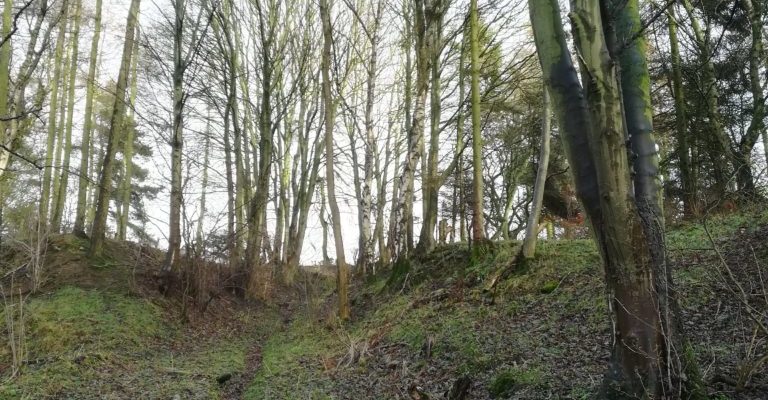EcoNorth’s new health and safety initiative is up and running. The goal is to promote the physical and mental wellbeing of team members by encouraging everyone to get involved with initiatives in the local community, including specifically participating in practical conservation tasks with our parent organisation, Northumberland Wildlife Trust (NWT). Getting involved in the wide range of practical conservation measures undertaken by the Trust will also ensure the EcoNorth team is up to speed with the measures to conserve biodiversity going on throughout Northumberland.
In mid-February, I ventured out of the confines of the warm EcoNorth office into the wilds of Northumberland, in the midst of Storm Dennis. Working alongside a small team of other enthusiastic volunteers and staff from NWT, I was involved in some hands-on habitat management focused on the removal of non-native tree species from a plot of mixed plantation woodland.
Despite the wintery showers, hail and occasional downpour, we were able to clear large areas of dense non-native coniferous species and create sunny glades suitable for replanting of native species. Some of the larger conifers will be cut into planks by NWT staff, which will be used to line a green/living roof at one of NWT’s buildings. All the brash, cut offs and logs that are not made into planks will be left on site to benefit nesting birds and other local wildlife. Nothing will go to waste. There is also the possibility to install some bat roost boxes in the mature trees, create amphibian/reptile hibernacula using material from the felling, and create an otter holt on the bankside of the river that cuts through the plot.
Although I am regularly out in the field, conducting site walkovers and habitat assessments for example, I find great satisfaction in being involved in physical habitat enhancements – no matter how small – with visible results. EcoNorth team members regularly undertake such activities as part of development mitigation measures but rarely for the pure and simple joy of it. There’s nothing quite like the ache after a hard day’s graft and being away from the computer screen for a day does wonders for morale. As an Ecologist, it is also hugely beneficial to spend time working in and contributing to the management of priority habitats. I am looking forward to revisiting the site in the months to come to see the results of the changes we have made.
EcoNorth’s new health and safety initiative has been a really positive experience and I recommend others take the opportunity to get involved.

